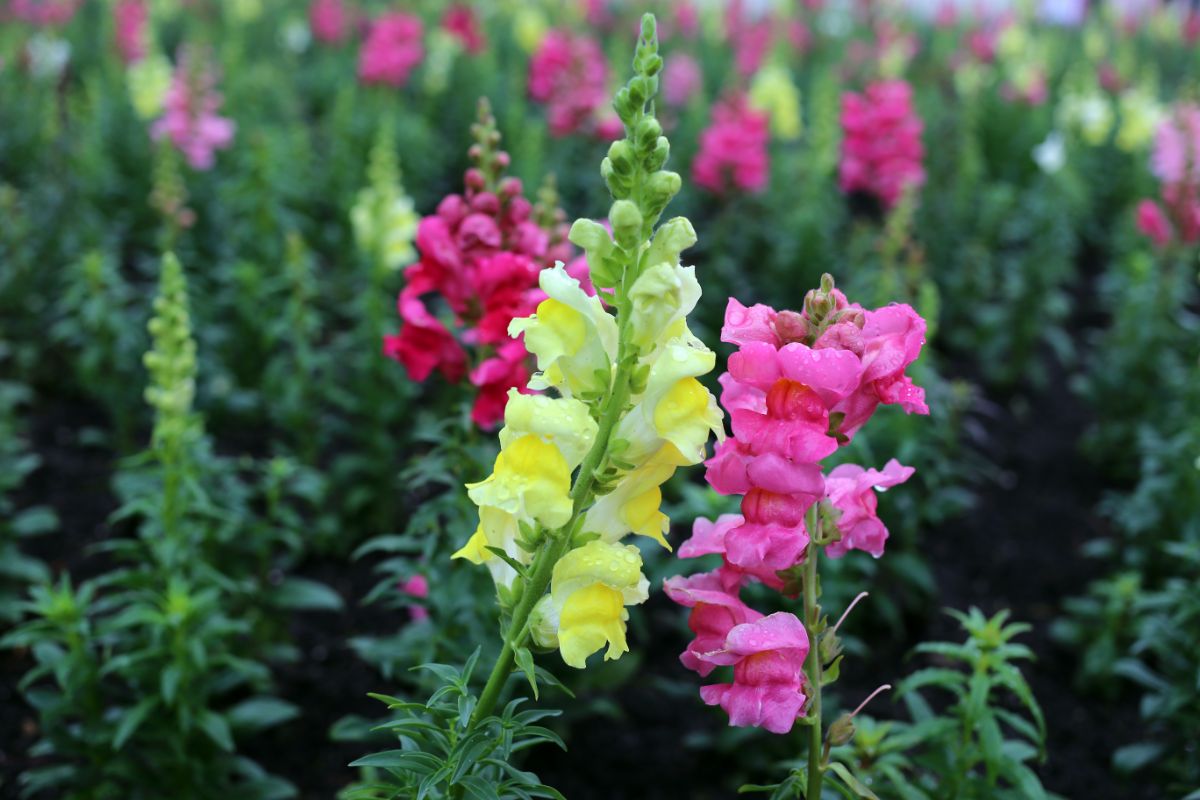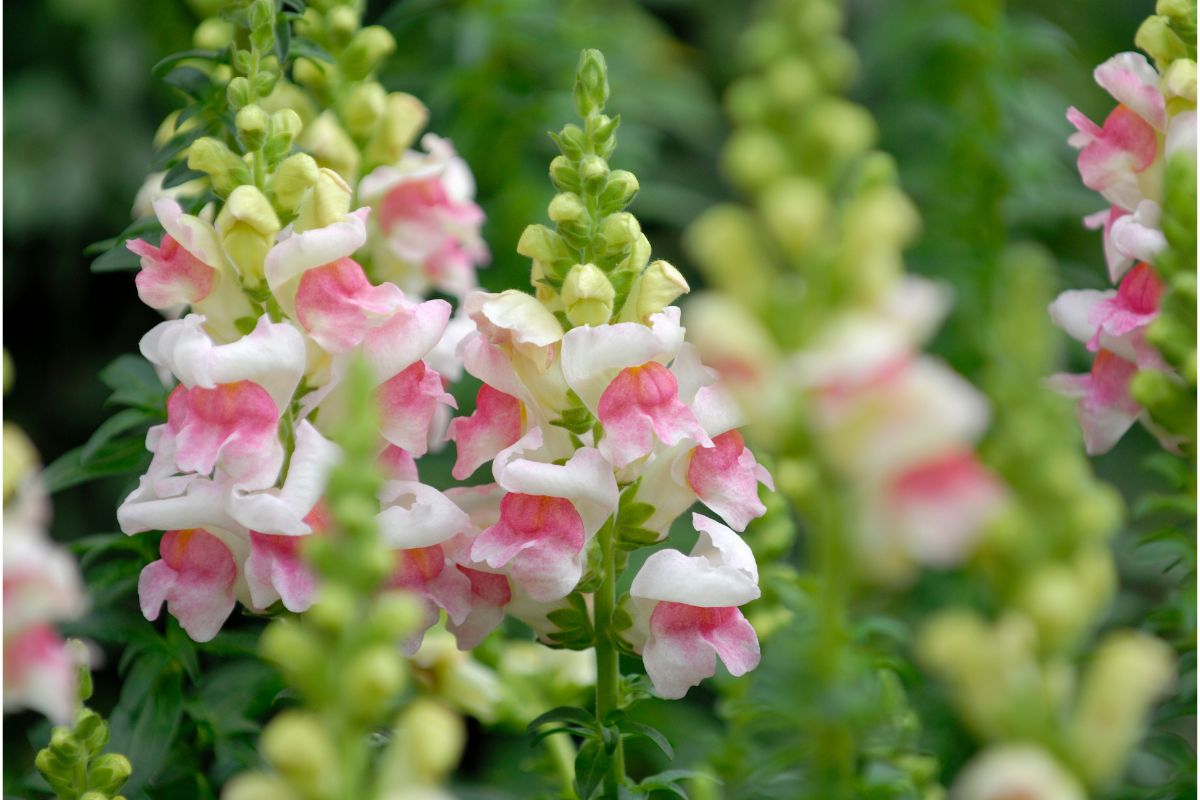When it comes to gardening, it can be tricky for budding plant enthusiasts to understand which flowers will grow when, and how long they will last.

As such, mistakes can occur – many of which can leave gardens looking lackluster, and gardeners feeling disappointed.
This is why researching your favorite plants should be step one for any budding gardener – ensuring that you can enjoy your garden to its full potential, and plan accordingly depending on the season and environment within which you live.
One such flower that can prove tricky is the snapdragon, a common and much loved flower that has a reputation for vibrancy and color. But when do snapdragons grow, and how long can they be expected to last for?
Perennial Vs Annual: The Difference
Before we discuss the snapdragons themselves, it is important for budding growers to learn about relevant terminology, and what exactly the differences therein are.
Oftentimes, when we talk about plants, we describe them as annual or perennial (along with other terms not relevant to this article).
As such, it is important to know what each of these means, and what implications it can have for plant growth, lifespan, and the things you need to do to ensure good longevity from your plants.
What Does Perennial Mean?
The term ‘perennial’ actually has a similar meaning to the word ‘perpetual’ (meaning continuous), and refers to plants that have the potential to live for more than two years.
This means that under the right conditions they can continually grow and come back after each seasonal cycle, blooming in the spring, thriving in the summer, declining in the fall, and falling dormant in the wintertime.
What Does Annual Mean?
The term ‘annual’ can actually be quite misleading – especially to those new to gardening – and it can lead people to get the wrong impression about the plants that they own.
When we call a plant ‘annual’, we actually mean that they last for roughly one year, before expelling new seeds, dying off, and growing a new plant from seed.
This process is inherently common throughout the plant kingdom, and while it does often guarantee a new plant from the seeds, can be more of a risky process when it comes to guaranteeing a blooming garden.
As you can imagine, annual plants can be impacted by all manner of environmental problems, and failure to establish proper conditions for growth could result in the plant not returning from seed the following year.
Are Snapdragons Perennial?
The unusual thing about snapdragons is that they can actually be both annual and perennial – meaning that some are relatively short lived, while others can live longer.
While there are notable annual species, many species of snapdragons are actually perennial, meaning that they have the propensity to continually bloom each passing year without succumbing to the natural environmental factors like other kinds of plants (like annuals) do.
However, these perennials are relatively short lived in their own right, and will generally last for a short period of years before eventually dying out, setting new seeds, and beginning the process once more.
Are All Snapdragons Perennial?
As mentioned above, not all snapdragons are perennials, meaning that some grow and live for approximately a year before they shed their seed, die, and potentially grow anew.
However, the short lived nature of even perennial snapdragons means that most growers will generally grow them as annuals – taking the new seeds at the beginning of each spring season and setting them, while removing the older plant to make way for the new.
How To Tell Whether Snapdragons Are Perennial?
When it comes to determining which variety of snapdragon you have planted, there are a few things you could try.
Read The Literature
If you have purchased the snapdragons in seed form, or you have bought a young plant from a garden center, then there should be all the literature and information you need on the tag to tell you what can be expected from them.
These labels will usually state whether the plant is annual, biennial, or perennial, and the best time of year to plant them for a successful year.
Observe The Growth
If you have inherited a garden from a friend or family member, or have been given some mysterious plants from a fellow gardener, then you might struggle to know the type of snapdragon you have.
Especially if you are new to gardening and do not know them by sight, this can make identifying them tricky indeed.
However, one way to discover what type of snapdragon you have is to observe the natural growth cycle once planted.
If the plant rejuvenates itself after a year has elapsed, then it is a perennial plant. However, if it dies off, sheds its seeds, and then grows a new plant from scratch, then it is of the annual variety.
Snapdragons: The Facts

Now that we know more about snapdragons, and whether they are perennial or not, let’s take a closer look at the plant itself, and the things any new gardener should know about them.
When To Plant Them?
If you are growing snapdragons from seed, then the best time to sow them is in the late spring/early summer.
At this point in the year, the soil will be at its most fertile, the conditions will be at their most moderate, and you stand the best chance of the plant taking hold.
When Should They Bloom?
Snapdragons can bloom numerous times throughout the year, and the exact time generally depends on when you have planted the seeds, and how long they have been growing.
However, generally speaking, snapdragons prefer the more temperate, cooler months – such as springtime and fall.
This means they can be expected to bloom in the fall of the first year, or in the following spring if they were grown from seeds.
How To Ensure Healthy Snapdragons?
For those who are looking to grow snapdragons from scratch, or ensure perennial snapdragons will continue into the following year, there are certain steps you can take to stand the best shot at long-lasting snapdragons.
These include:
- Get The Light Right – Despite liking the cooler weather, snapdragons can do as well in direct sunlight as they do in light shade – but in hotter climates, shadier areas might be better.
- Manage soil pH – try and keep the soil pH around 7 or above at all times.
- Use organic fertilizer.
- Introduce an inch of water per week – unless there is regular, natural rainfall.
- Do not use overhead irrigation.
- Sow them in cooler weather.
- Regularly remove deadheads from the plants.
Final Thoughts
And there we have it, everything you need to know about snapdragons, and whether or not they are considered perennials.
It’s true that snapdragons are a much loved and popular flower, and one that has remained such throughout the decades.
However, despite being relatively low maintenance – as most perennials can be – it is still important to know what their needs are, and the best ways to keep them growing and thriving for years to come.
- Interesting Flowers That Start With A - July 21, 2023
- Interesting Flowers Beginning With H - July 21, 2023
- 14 Fascinating Flowers That Begin With C - July 20, 2023
